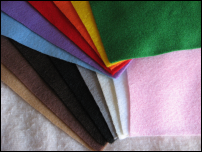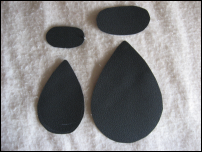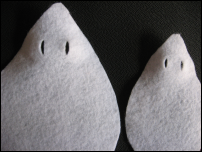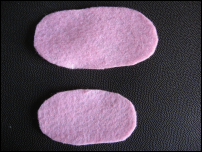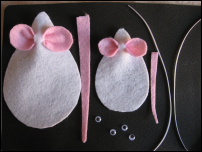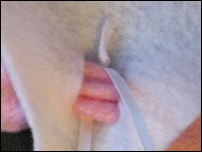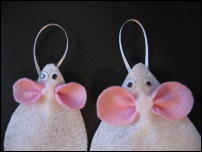|
 WRITTEN BY
JNFERRIGNO
WRITTEN BY
JNFERRIGNO
Thank you all so much for
participating in the first Orbis Worlds Newsletter quiz! Below the
winners will be the answers to last months questions. Winners please
contact us to receive a special banner.
Aryn Vernier of
VHR scored 100%
Olivia
Troost of VHR scored 100%
Answers
Q: How many games does Orbis Games host?
A: 5
Q: Match the following animals to their proper games
A: Spooky Shetlands (VHR), Zombie Wolves (VP), Basilisks (SBF)
Q: El Dia De Los Muertos celebrates.
A: The Day of the Dead
Q: When is Guy Fawkes Day celebrated?
A: November 5th
Q: Name the company that has partnered up with Orbis Games 3D game
Virtual Horse Ranch II to make plush toys.
A: Myrtlewood Horses
Q: What is the name of Shannon Cusicks cat?
A: Kaito
Q: What is the name of the horse featured in the Olympic Article?
A: Salinero
Q: Who won the most medals in the Equestrian Olympics?
A: Germany
Q: Who owns the minature horse named Rarity?
A: Hawk
Q: In what year did JellyBeanJoe become an OP?
A: 2008
Q: Which Orbis Staff Writer owns Rats?
A: JNFerrigno
Q: What is the name of Kit Cats dog?
A: Panda
Q: What year did Rev join Virtual Horse Ranch?
A: 2004
Q: How many of Corals puppies survived the rescue?
A: 6
Q: Which OP is known for her comical vents?
A: DragonWings
Q: Who write the short story Guardians in Exile?
A: Shekeira
Q: Which featured player also practices jousting?
A: DragonWings
Q: What was the first dog breed to be featured in the newsletter?
A: Tibetan Mastiff
Q: Desert-dwelling nomads of Arabia are known as?
A: Bedouin
Q: Which featured player breeds appaloosa horses?
A: Missing
 WRITTEN BY
JNFERRIGNO
WRITTEN BY
JNFERRIGNO
Horse
racing. One might think of the Kentucky
Derby when 3-year-olds race on dirt, or if you’re from down under, you
might think of the famous Melbourne Cup, where horses race on turf
instead. But what about racing on ice?
White Turf. It's not a name
we are all familiar with. But for
three days out of the year, Europe’s best horses gather on the frozen,
Lake St. Moritz located in the Engadine valley in Switzerland. Set
against the magnificent alpine backdrop, visitors who have born witness
to this spectacular race have commented that you can actually hear the
ice crack under pounding hooves. Each day St. Moritz hosts a number of
races from trotting, to on the flat, and then the heart of St. Moritz,
Skijöring.
Trotting races at St. Moritz
are similar to the Standardbred
racing we are familiar with, the only difference is the track and the
wheels of the buggies are replaced with skies. Flat races are where
horse and rider duke it out on a field of frozen ice with a dozen other
beasts. But there was a time when Skijöring was unique solely to
this
race track.
Skijöring, or ski
driving, is where a skier is towed behind a
horse, controlling him through the use of extended driving reins. Some
traditions call for the horse to be ridden, and towing the second
person behind. But at St. Moritz, it’s a one man show.

IMAGE BY
WILLY COOK
As an American, it is
interesting to see how the sport has evolved
in different countries. While in Europe Equestrian Skijöring is
generally performed over a flat turf of ice and snow, Americans have
taken the event to the extreme. Competitions take the conventual
Skijöring and throw in obstacles like jumps, gates, extreme skiing
maneuvers, and even spear rings. Skiers can use traditional skies, or
ski board which is growing in popularity.
Currently over half a dozen
states in American have annual extreme
Skijöring events, and many countries are now catching on. But if
extreme sports isn’t your cup of tea, you can always fly out to
Switzerland and watch classical Skijöring at it’s finest.
Scheduled Events
Saturday, December 20
= Line Art for Coloring Contest Announced
= Mules given out for train off
Thursday, December 25
= VHR’s Week long Scavenger Hunt: Finding Items and
Horses
= 20 Raffle Drawings
Friday, December 26
= Opening Day for Quizzes
Famous Thoroughbred Race Horses, Which VHR
Breed, Name that Color, English & Western Tack, and Horse Anatomy
= Forum Trivia: Guess the Breed
= 20 Raffle Drawings
Saturday, December 27
= VHR Scavenger Hunt II: Question and Answer only
= Forum Trivia: Famous Horses in Movies and Books
= 20 Raffle Drawings
Sunday, December 28
= Forum Trivia: Anything Goes (all horse and game
related)
= 20 Raffle Drawings
Monday, December 29
= Forum Trivia: Game Specific Questions
= 20 Raffle Drawings
Tuesday, December 30
= VHR Scavenger Hunt I Ends
= 20 Raffle Drawings
Wednesday, December 31
= Winner of “Spots Will Roll” train off announced!
= Coloring Contest Winners Announced
= A Raffle Bash will be hosted in the VHR party chat
room
For more information please visit the block party web site.
|
|

WRITTEN
BY RACERFASTROSY
Creations in SBF
are colors, varieties (breeds), details, and species.
They can be created by any player for 60 to 2000 tokens. The price is
based on what the rarity of the creation is. The lowest rarity is
overpopulated, and the highest is Almost Extinct. Almost Extinct
creations can not be bought as a foundation pair by other players, so
the creator has exclusive rights to them. 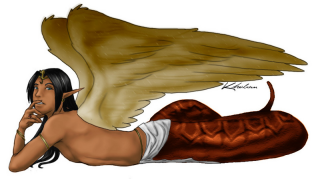
All of the
players I interviewed had created at least one either color
or variety. I did get quite a variance of answers though. The minimum
was 1 breed, and the maximum was 120 colors, 40 details, 136
variations, and 9 species (by Jinxx)! Most people created realistic to
semi-realistic characteristics. For example, EDZ created a Light Merle
Appaloosa llama color, which is a real color. B.B. Urie, on the other
hand, created the Talking Chipmunk Squirrel breed, a much more
whimsical choice.
Most people had a
connection or reason behind their choices. Many
people base them off their interests or things they are passionate
about. Most of my interviewees said that they want the characteristics
they create to be based in reality, but to be something slightly
unusual or that people wouldn't think of right away.
One of the most
touching and inspirational stories I found while
interviewing was that of Silversketches. She created the Balinese
Tiger, a now extinct variation in real life. After watching a show
about threats to the survival of tigers, she decided to help by raising
awareness of the tigers' plight. She says that she created them "so
that I could tell players that these tigers need our help, and my
tigers are an example of what will happen to all the tigers if we don't
help."
Creating colors,
variations, and details is an integral part of the
culture of Sandbox Farm. There is an entire forum devoted to people
sharing their creations and commenting on others. SBF is undoubtedly
all the richer for the dialogue, sense of community, and interest
creations have developed.
Thanks to Jinxx,
Vitani, silversketches, mash, EDZ, drmchaser, and B.B. Urie for their
interviews and information.
Thank you to Kholran for allowing us to
use her custom art piece, pictured here is a Naga, one of her SBF
creations.

CREATED
BY BROODMAREPAINT

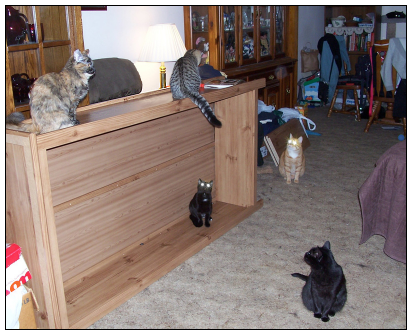
|
|
 WRITTEN
BY JNFERRIGNO
WRITTEN
BY JNFERRIGNO
When I was a little tot, my mother and I would go to a Mommy and Me
class, and around the holidays we made these green and red felt mice to
hang around the bottom of the tree. Years later, I had almost forgotten
this, but did remember taking them down from the attic every year after
that. Because I had such a fun time decorating the tree with these, I
thought other newsletter readers might enjoy themselves as well.
If you don’t wish to make holiday
ornaments, I have also made these into door hangers, hair clips,
magnets, and pins.
Check out your local craft store and see
what colors of felt their carry. This can be done with loose or stiff
felt, and even foam sheets.
Use some kind of still paper or plastic
to trace out a tear drop, and an oval. The tear drop will become the
mouses body, and the oval will be the ears.
Once you trace the pattern on the felt,
cut the image out. Taking the tip of the nose, fold it into the body no
more then an inch, and cut two small incisions about 1/4 inch wide.
Standard Eared: make an incision that is
no wider then 1/4inch and space it less then 1/2inch apart.
Dumbo Eared: make an incision that is
wider then 1/4inch and space it almost an inch apart. |
After you cut your ears out, and make
your ear slits, roll the ears up and slide them through the ear holes.
Open the ears up with your fingers till
they take on an ear
shape. Cut two strips of felt for a tail, two 6 inch pieces of ribbon,
and take out 4 eyes.
You can floss the ribbon through the ear
bridge under the mouse,
or you can glue it (using hot glue) to the under side of it’s nose.
Once you glue on the eyes, this is what
they should look like.
The tail (not pictured) should be glued on the underside about 1/4inch
in. |
 WRITTEN
BY JNFERRIGNO
WRITTEN
BY JNFERRIGNO
For us Americans, holiday left overs are our playground. Pretty much
take what ever you have in the fridge, throw some cheese on it and slap
it in the oven, Tada! Usually what is left over, is a hallowed out
turkey carcase, or maybe even a ham bone. 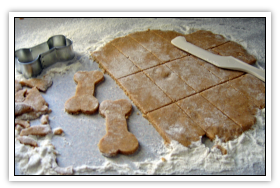
Here’s a great idea! Make some soup
stock with the bones, and set aside two cups of the broth to make some
Turkey and Barkey Biscuits for your puppers!
1/2 cup
extra virgin olive oil
1
tablespoon garlic granules
4
tablespoons fresh parsley
2 cups
broth
2 cups
barley flour
3 cups
rye flour (may need an extra cup)
Preheat oven to 350 ̊ F (180 ̊ C).
In a large bowl, combine olive oil,
garlic and parsley. Heat the broth until steaming and add to the bowl.
Stir in barley flour and let cool enough to work with. Gradually blend
in rye flour, adding enough to form a stiff dough.
Transfer to a rye-floured surface and
knead until smooth (about 3-5 minutes). Shape the dough into a ball,
and roll to 1/4-inch thick. Use the cookie cutter of your choice or cut
into small squares. Transfer to ungreased baking sheets, spacing them
about 1/4 inch (6 mm) apart.
Gather up the scraps, roll out again,
and cut additional biscuits.
Bake for 30 minutes. Remove from oven
and turn them over. Bake for an additional 30 minutes, or until golden
brown on both sides. After you finish baking all batches of biscuits,
turn off the oven, spread all the biscuits in one baking pan and set
them in the oven to cool for a few hours or overnight. The extra time
in the oven as it cools off helps make the treats crunchier.
|
|
|
|
|
















